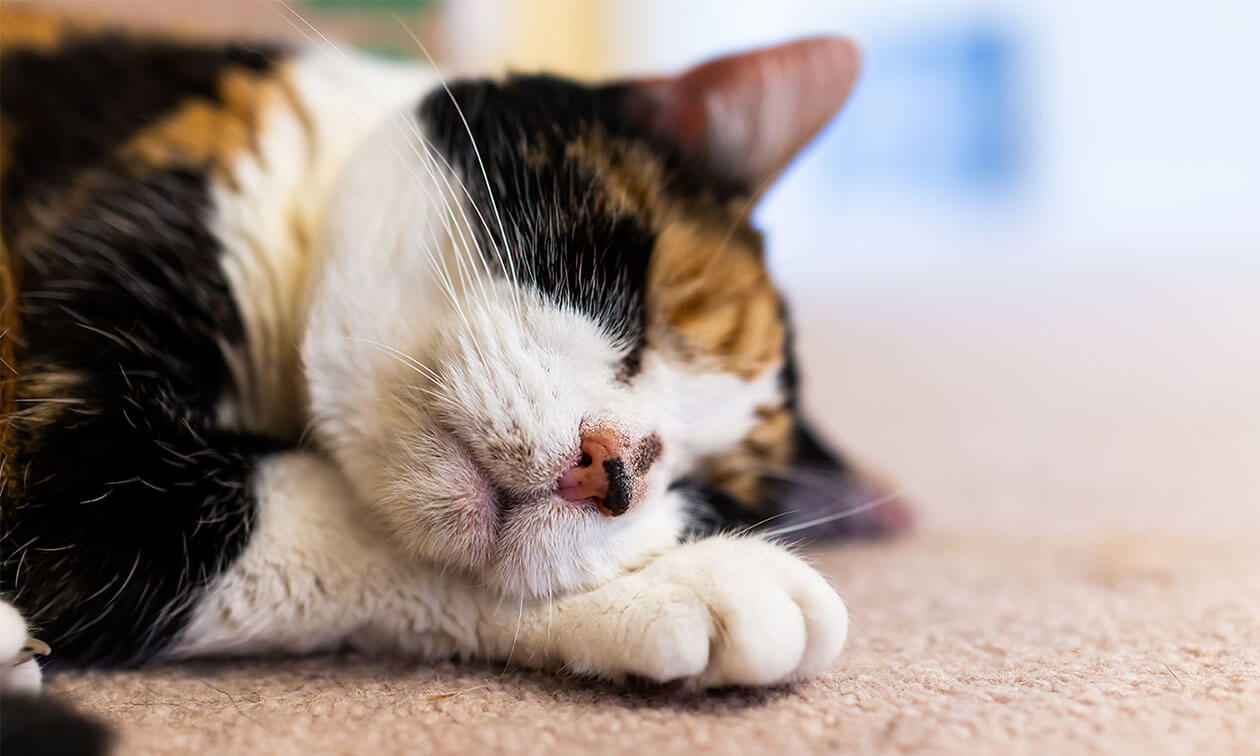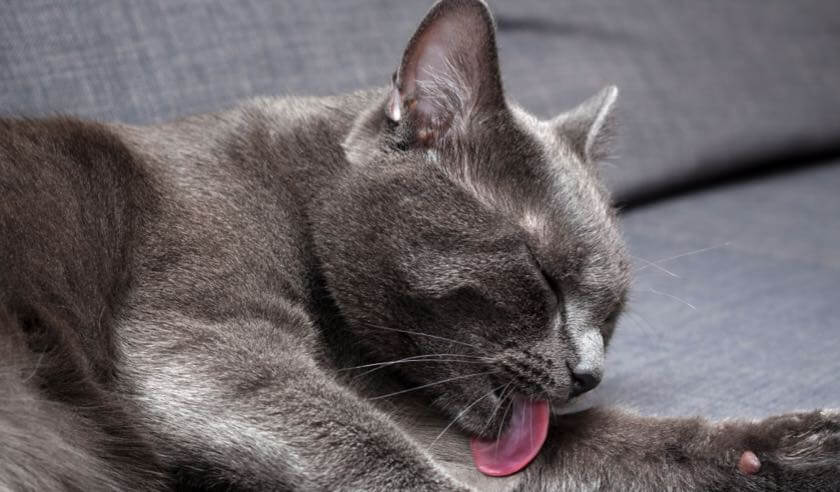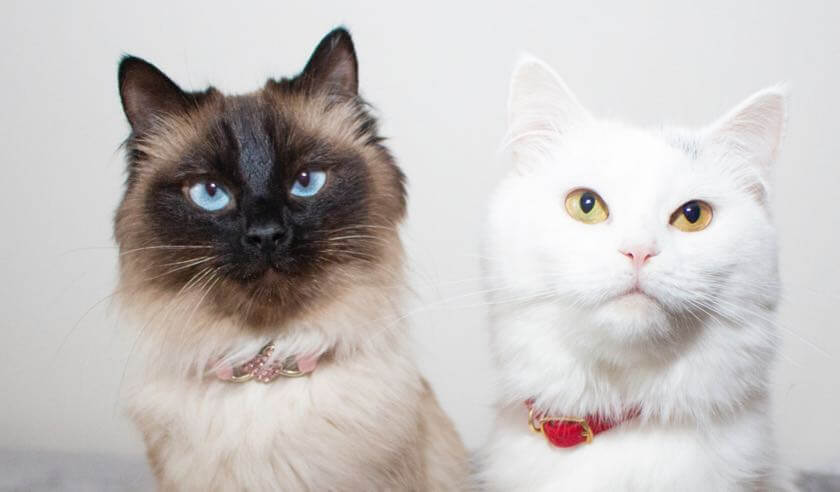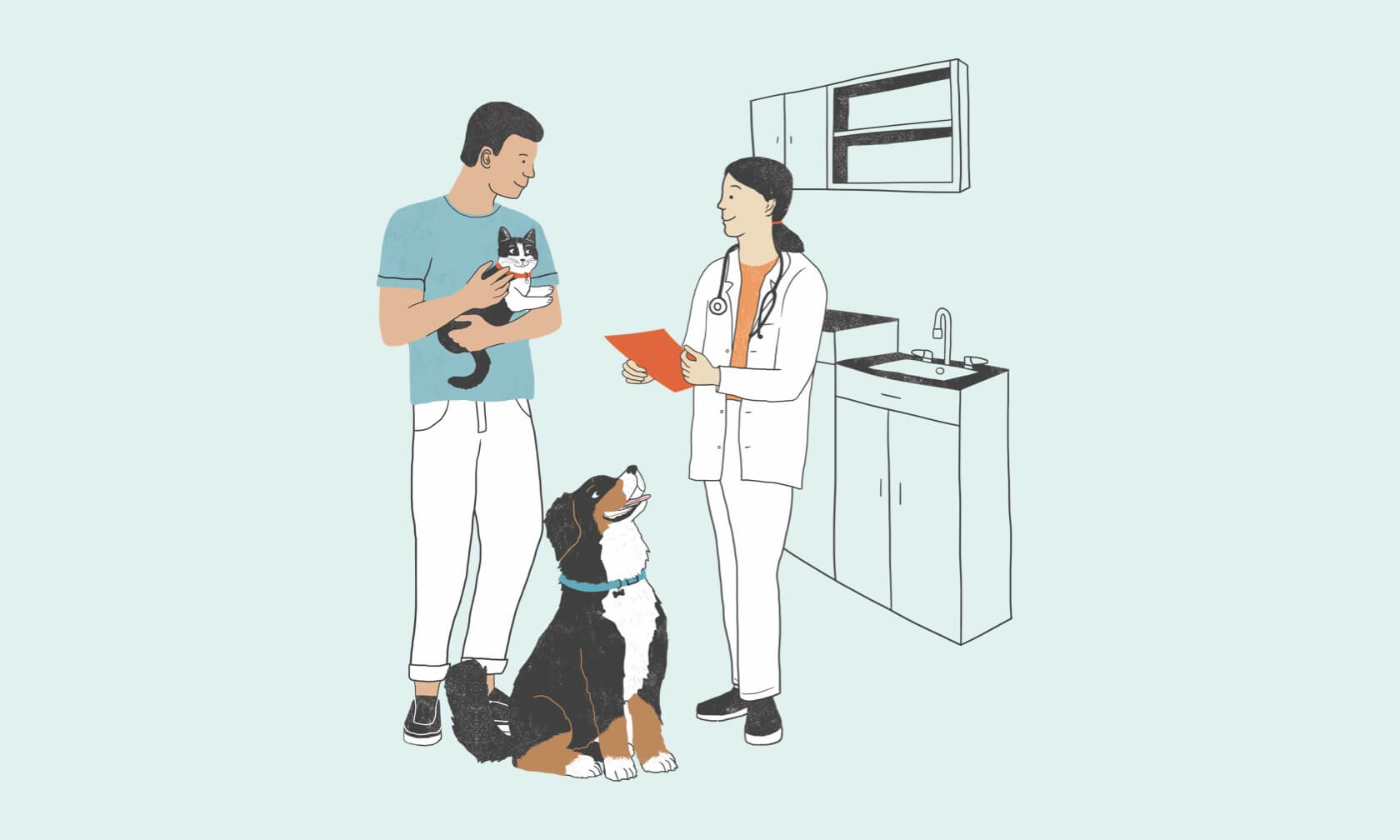Acne can affect people of all ages, but did you know that cats can have acne, too? Cats sometimes get a condition known as chin acne. It’s helpful to know the signs so you can talk to your veterinarian right away if you suspect your cat may have it.
What Is Chin Acne in Cats?
Chin acne is a fairly common but poorly understood condition that can affect cats of all breeds. This condition occurs when an excessive production of keratin, a protein found in the skin, blocks the hair follicles. The follicles may become infected with bacteria, which leads to the formation of pustules (or pimples). Chin acne usually only occurs on a cat’s chin and around their mouth at the edges of the lips.
How To Recognize Chin Acne on Your Cat
Chin acne is easier to identify on white or light-colored cats than on dark cats.
The typical presentation is little black dots on the chin or around the upper and/or lower lip edges. The black dots are known as comedones or blackheads. Their general appearance is bumpy or crusty and can look like specs of dirt. This is why many think their cat’s chin is just dirty when they actually have chin acne. The skin can be raised and bumpy or appear swollen and red. Additionally, the fur may be missing or thinning.
With chronic cases, the skin is thickened, and the tiny black dots progress to red bumps with pus. At this point, bacterial and yeast infections can take hold. These areas are often painful to the touch. Cats with chronic chin acne will rub or paw at the area, which can cause bleeding.
The signs of chin acne can resemble other skin diseases. Therefore, it’s important to have your cat evaluated by a veterinarian to determine the exact cause of the chin acne so proper treatment can be prescribed.
What Causes Cat Acne?
While the exact cause of chin acne in cats is largely unknown, the condition happens when a hair follicle is clogged on the chin or around the mouth. Overproduction of keratin is a contributing factor. Certain diseases may increase the likelihood of chin acne in cats:
- Environmental allergies
- Food allergies
- Contact allergy (typically to plastic)
- Eosinophilic Granuloma Complex
- Ringworm
- Demodex mites
- Autoimmune disorders
Here are some additional factors that may play a role in cats developing chin acne:
- Poor grooming habits, especially in senior cats
- Stress
- Viral infections
Your cat’s chin acne is not contagious to other cats or people, but it does require proper treatment by your veterinarian.
Is Cat Chin Acne Painful?
Whether cat acne is painful or not depends on how severe it is. Typically, the tiny blackheads are not painful. However, cat acne is likely painful in moderate to severe cases where the skin is inflamed, swollen, oozing, and scabbing due to a skin infection. If you notice the latter scenario on your cat, even if they act fine, contact your veterinarian right away to schedule an examination for your cat.
How Is Chin Acne in Cats Diagnosed?
A veterinarian usually diagnoses chin acne based on your cat’s medical history and signs. If other underlying conditions are suspected, blood work, urinalysis, skin scrapings, skin cultures, and other tests may be recommended.
If chin acne lesions appear different than what is normally seen with this condition, your veterinarian may recommend skin biopsies. This rules out other conditions, such as cancer or immune-mediated disease.
Dental radiographs may be recommended since tooth root infections can have some of the same symptoms as chin acne.
How To Treat Cat Acne
Your veterinarian may shave the fur on and around the chin acne to make cleaning the area and topical treatment easier. Topical therapies include antiseptics, anti-inflammatory medications, and preparations to treat bacterial and yeast infections if a skin infection in present. Oral and injectable medications may be necessary for more significantly affected cats. Severely affected cats may require a referral to a veterinary dermatologist.
New Dishes
Your veterinarian may also recommend providing your cat’s food and water in nonporous dishes with a smooth surface, such as glass, ceramic, or stainless steel. These dishes should be cleaned daily with soap and water.
Supplements
Cats with chin acne often benefit from supplementation with Omega 3 fatty acids and probiotics.
Grooming
Routine brushing, bathing, and disinfecting are beneficial if poor grooming is part of the issue. Keeping the fur trimmed short may also be helpful.
It’s important that any underlying conditions, especially allergies, be treated and managed for the chin acne to heal. It’s important to note that feline acne is usually a chronic disease so additional outbreaks may occur. If your cat has re-occurring chin acne, your veterinarian will develop the most effective treatment plan to help get your cat some relief. It may be necessary to treat your cat long-term with topical therapies like cleansers to minimize the number of outbreaks they develop over time.
ZPC-02583





